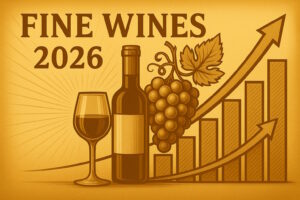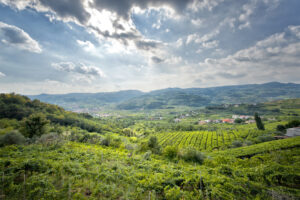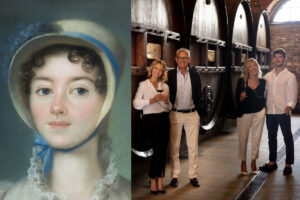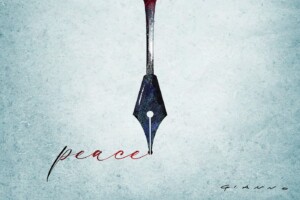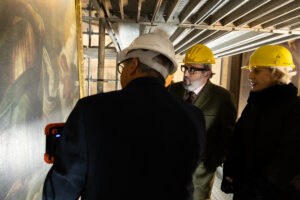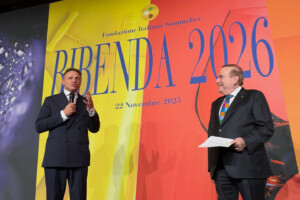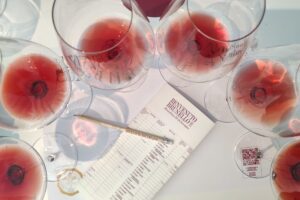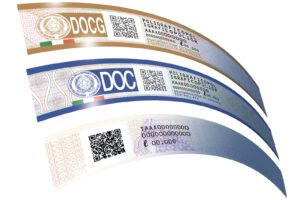In Italy, between Christmas and the Epiphany, 110 million bottles of spumante were uncorked of the almost 260 million bottles that are produced nationally each year. According to statistics from the Assoenologi studies center, the best-selling Italian spumantes are Asti and Prosecco of Conegliano and Valdobbiadene yet again. Prosecco has an overall production of 37 million bottles, of which 10 million are exported. Asti produces 72 million bottles, of which 55 million are exported. During these holidays Italians spent 750 million Euros on bubbly. "But to this count an almost double amount should be added for the other Italian wines, those which are calm and fizzy, that are drunk light-heartedly or appropriately combined with lunch, dinner and banquet dishes,” as Giuseppe Martelli, general director of Assoenologi, contentedly comments. He adds, “This all leads us to conjecture a value of about 1.850 million Euros as compared to 1.800 in 2005".
This is additional proof that Italians continue to prefer their own wines and spumantes, and recognize the other qualitative standards that, at all levels, production has consolidated on various important worldwide markets as well.
"In fact,” continues the general director of Assoenologi, “the latest data on the sale of Italian wines abroad show an overall increase of 13% in quantity and 9% in value as compared to 2005, with a growth of the spumantes that is close to 17% in quantity and 13% in value. Additional proof that the concept is strengthening for both normal products and for the latest fads comes from the fact that the consumer is continuously more attentive and knowledgeable, and the choice is based on the quality/price ratio for mid-level products, and quality/price/image for those at the highest level".
And the sales from these holidays reinforce this concept considering that manufacturers sold almost 8 million bottles of "classic method" spumante and more than 100 million bottles of "charmat method" spumante, that is, spumante obtained with the fermentation in autoclave. Certainly, one of the reasons of this success is the attention to the production price, which the manufacturers kept practically unchanged from last year. On average in Italy, in large distributors, a bottle of Asti on the shelves fluctuates between 3 and 8 Euros depending on variants and sales, while the same products are sold between 10 and 20 Euro a bottle in Russia.
Again according to the statistics of the Assoenologi studies office, spumantes produced in Lombardy have slightly increased in both quantity and in value, with retail prices between 6 and 9 Euros for Oltrepò Pavese and less than 12 Euros for Franciacorta, not including reserves.
"There is high satisfaction for the "classic method" in Trento as well,” explains Giuseppe Martelli, “considering that the production of Trento Doc has arrived at 7.5 million bottles, to which 2 million of the "charmat method" are added. Prices to the consumer have remained stable from last year in this area as well, fluctuating between 8 and 12.50 Euros for the middle- to high-level spumantes. When gems such as Giulio Ferrari reserve are purchased, prices start at a base price of 40 Euros, which increases depending on the location and circumstance at which it is consumed.
According to Assoenologi, the increase in sales of single package wines and spumantes during these holidays was greater than 10% with respect to 2005. Furthermore, giving a nicely packaged bottle of wine or spumante is a gesture that easily pleases both the donor and the recipient, and there is a large variety of sorts and costs from which to choose.
But the new craze in 2006 was certainly "classic method rosè" spumante, for which demand increased 100% - so much so that the manufacturers had a supply crisis and all stock was exhausted. This is another example that underlines how even the traditional sectors, such as the wine sector, are changing, and that the consumer more often chooses not that which is proposed to him but the product that he likes and is trendy.
"All of this despite the fact that Italians are not great spumante consumers,” concludes Dr. Giuseppe Martelli, “considering that Italians drink only 3 bottles of it per person yearly, compared to the Germans who drink 6, the French who drink 5, and the Spanish who drink 4".
Copyright © 2000/2025
Contatti: info@winenews.it
Seguici anche su Twitter: @WineNewsIt
Seguici anche su Facebook: @winenewsit
Questo articolo è tratto dall'archivio di WineNews - Tutti i diritti riservati - Copyright © 2000/2025














